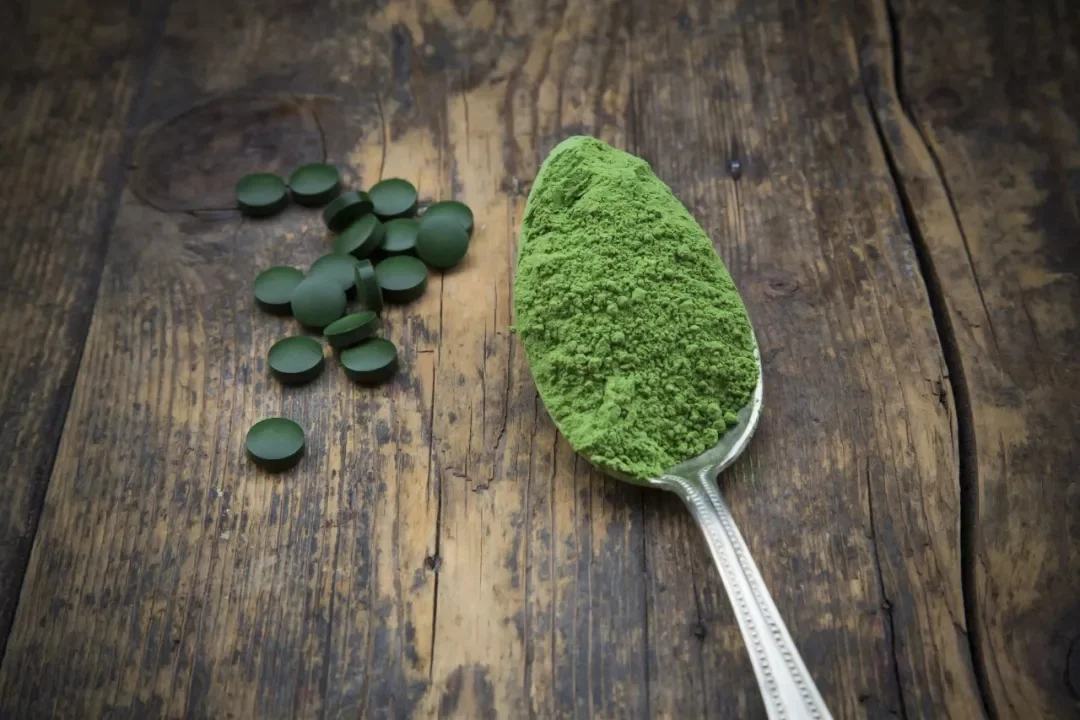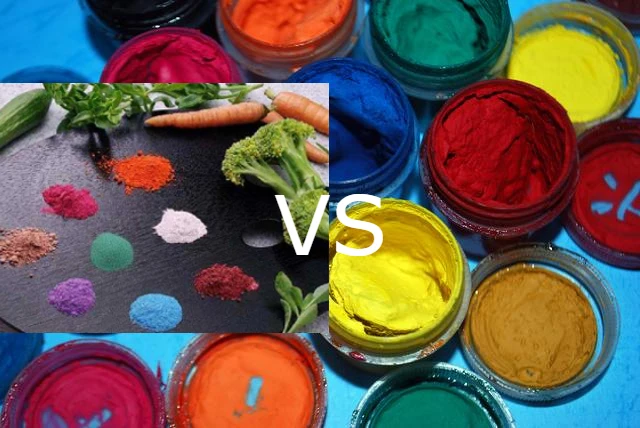What are natural pigments and synthetic pigments?
1. What are natural pigments
Natural pigments are made from natural materials that can be used for to dyeing. They are extracted from plants and animals, minerals, soil, mud and insects. Some natural pigments were widely applied since ancient times, such as indigo pigments extracted from acacia trees which were used in the pharaonic age of Egypt. Currently, natural pigments are still suitable for unique purposes, being widely applied in painting, dyeing, food coloring, medicine, etc.

2. What are synthetic pigments?
Synthetic pigments are made through chemical synthesis. They have stable properties, bright colors as well as high gloss, durability and transparency. Synthetic pigments may be in the powder, paint or particle form. They are widely applied in paints, plastics, inks, art supplies, etc.

What are the differences between natural color pigments and synthetic pigments?
1. Categories of natural color pigments
I. Soil pigments
Soil pigments are extracted from soil, and the most common of them are Ochre pigments, loess pigments and carbon black pigments, all can be applied in dyeing or painting. Due to different quality and composition of soil in various regions, soil pigments have unique regional characteristics.
II. Natural Pigments from Plants
Natural pigments from plants are mainly extracted from petals, fruits, stems and leaves of plants, with rich colors and good dyeing effects. Common plant pigments include indigo, safflower and garcinia, which are widely employed in dyeing, painting, dyeing, etc.

III. Animal pigments
Animal pigments are mainly extracted from animals, such as purple shells, conch shells and persimmon worms. They have bright colors and high gloss, but are expensive due to difficulties in extraction. They are not widely applied, usually in painting and dyeing.
2. Categories of synthetic color pigments
With the chemical development in the new era, new synthetic pigments are emerging, such as Prussian blue, cobalt pigments, synthetic ultramarine pigments, chromium oxide pigments, cadmium pigments with different hues, phthalocyanine pigments, quinacridone pigments, dioxazine pigments, anthraquinone pigments, perylene pigments, naphthol pigments, azo pigments, benzimidazolone pigments, etc. They have significant impact on arts and industrial development.
What are the characteristics of natural pigments and artificial pigments?
I. Source
Raw materials of natural pigments are extracted and separated by physical or chemical means from natural plants, animals, minerals, etc. Artificial pigments are made through artificial chemical synthesis with chemical materials and industrial production technologies. In terms of source, natural pigments have more natural properties, while synthetic pigments are characterized by higher technical content.
II. Cost
Natural pigments are expensive due to complicated harvesting, extraction and separation. In contrast, the production cost of artificial pigments is lower because of simpler raw material procurement and production. Therefore, synthetic pigments are cheaper in practical applications.
III. Stability
Natural pigments have poor stability under different conditions. Their colors will change under the influence of light, temperature, etc. Artificial pigments can be made bright and stable by adjusting their chemical structures. They can also be adjusted as needed for better coloring effects.
IV. Safety
Natural pigments from the natural environment are safer, but they may lead to allergic reactions. Artificial pigments are often sold in the market after strict safety tests, and toxicity, carcinogenicity and other factors have been considered in the development process.
In short, natural and synthetic artificial pigments have advantages and shortcomings, respectively. Please choose them based on needs and applications, and pay attention to their safety and market compliance.
What are differences between natural Pigment Powder and synthetic pigments?
I. Sources of synthetic and natural pigments
Synthetic pigments are made by chemical synthesis, while natural pigments are extracted from plants and animals. A lot of non-renewable resources such as oil and coal are used in production of synthetic pigments, but natural pigments are extracted from renewable resources such as plants and animals.
2. Chemical structures of synthetic and natural pigment Powder
Synthetic pigments have simpler chemical structures and smaller molecules than natural pigments. Accordingly, synthetic pigments have bright colors, while natural pigments have gentle colors.
3. Differences of synthetic and natural pigments in chromatography
Natural pigments have some constraints in dyeing, and their chromatography is narrow. At present, there are less than 200 colors available. Comparatively, synthetic pigments have a wider chromatography.
4. Sustainability of synthetic and natural pigments
A lot of waste water and gas are produced during the production of synthetic pigments, causing serious pollution to the environment. Natural pigments are produced in an environmentally friendly way, with fewer pollutants.
5. Differences in dyeing processes of synthetic and natural pigments
Natural pigments are divided into direct pigments, medium pigments and reductive pigments. Among them, medium pigments vary the most greatly in dyeing. They show significant color changes because of different mordants and mordanting processes. Some medium pigments can be used for dyeing in three colors or more. Generally, mordanting processes are used little or not used for synthetic pigments.
6. Differences in luster of synthetic and natural pigments
The products dyed with natural pigments look natural and subdued, as if they are washed. Those dyed with synthetic pigments are bright.
7. Difference in color fastness of synthetic and natural pigments Pwder
Chemical pigments have high requirements for color fastness due to many unsafe factors, especially for underwear, baby clothes and home textile (Level 3 or above). Plant pigments are safe and not harmful even in case of fading. There are still no limits in international standards for natural pigments. However, the color fastness of natural pigments is essentially half or one level below that of synthetic pigments, i.e. Level 2.5 or above.
8. Difference in production cycles and prices of synthetic and natural pigment Powder
Natural pigments are restricted by sources, equipment and processes, leading to long production cycle, high cost and high price. They are about 5-10 times more expensive than synthetic pigments. At present, they are only suitable for the high-end market. Synthetic pigments are suitable for medium- and low-end markets due to low price and short production cycle. But they are less environmentally friendly than natural pigments.

| Main Indicator | Synthetic Pigment | Natural Pigment |
| Source | Chemical synthesis | Natural plants, animals, minerals |
| Stability | High | Low |
| Safety and environmental protection | High toxicity, subject to safety monitoring | High safety |
| Chemical structure | Simple molecular structure | Complex molecular structure |
| Chromatography | Wide | Narrow, only more than 200 colors |
| Luster | Bright | Subdued |
| Production cost | Low | High, 5-10 times that of synthetic pigments |
| Color fastness | High | Low |
Advantages and disadvantages of synthetic pigments natural pigments

Advantages of synthetic pigments:
1. Bright color and high color stability. The color and light fastness of synthetic pigments can be controlled and improved by adjusting reaction conditions, reactant ratio and other factors.
2. Simple production process and low cost. Compared with natural pigments, synthetic pigments are suitable for large-scale production and meet market demands due to simple production processes and low costs.
3. Extensive applications. Synthetic pigments are widely applied on a variety of substrates, such as metals, plastics and textile.
4. Good environmental performance. The reaction conditions, reactant ratio and other factors can be adjusted in the production of synthetic pigments, to reduce the pollution to the environment by decreasing waste water and gas emissions.
Shortcomings of synthetic pigments:
1. The safety of synthetic pigments is subject to quality control. Impurities and harmful substances may be mixed in production of synthetic pigments, causing harm to the human body.
2. Synthetic pigments are harmful to human health. They have negative impact on the human system, such as allergies, liver injury and so on.
Advantages of natural pigments:
Natural pigments are very safe and harmless to the human body. They are usually extracted from natural products .They are harmless and environmentally friendly, without any harmful substances.
Shortcomings of natural pigments:
1. Natural pigments have a quite narrow chromatography, less than one percent of that of synthetic pigments.
2. Natural pigments are not suitable for any synthetic fibers. They are mostly used to dye silk and cotton.
3. Natural pigments have very low color fastness, except for indigo, they have quite poor color fastness.
4. It is difficult to make commercial natural pigments of standard concentration for modern industrial production.
What Should We do to Solve Synthetic and natural pigments?
Synthetic and natural pigments have their own advantages and shortcomings. To solve the aforesaid problems, we can take the following measures:
- Develop more environmentally friendly synthetic pigments to reduce the consumption of non-renewable resources.
- Improve the yield and quality of natural pigments, and promote the application of natural pigments.
- Strengthen the technology development to improve the dyeing efficiency and quality of natural pigments.
- Optimize the production process of synthetic pigments to reduce waste water and gas emissions.
- Produce synthetic pigments by green chemical means to reduce the impact on the environment.
Synthetic and natural pigments have their own characteristics. Synthetic pigments with bright colors are suitable for fast dyeing, but may lead to environmental pollution and resource consumption. Natural pigments are environmentally friendly, sustainable and biocompatible, but subject to constraints such as low dyeing efficiency and high cost. In order to solve these problems, we should take various measures. For example, we can develop environmentally friendly synthetic pigments, improve the yield and quality of natural pigments, and optimize production processes. Meanwhile, we should choose appropriate pigments based on actual needs and conditions to promote the sustainable development of pigments.
OUR PIGMENT PRODUCTS



